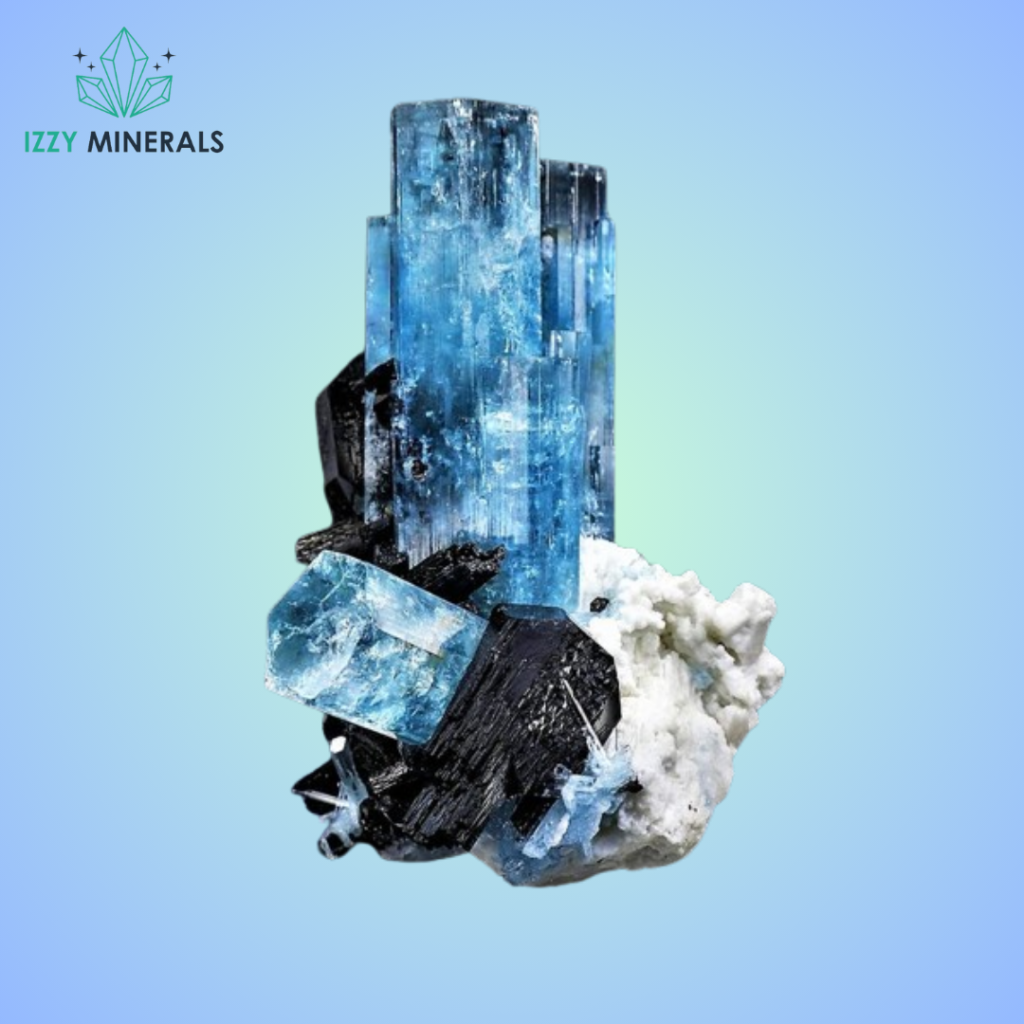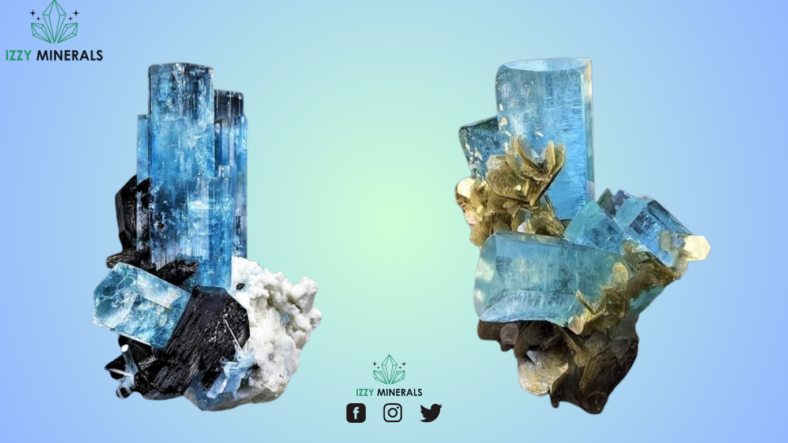Aquamarine, with its mesmerizing blue hues reminiscent of the ocean, often sparks curiosity about its rarity.
Let’s delve into the depths of this captivating gemstone to uncover the truth behind its scarcity.

Understanding Aquamarine’s Rarity
Aquamarine, derived from the Latin word “aqua marina” meaning “water of the sea,” is a type of beryl, a mineral family that also includes emerald. Known for its transparent to translucent appearance, aquamarine’s color ranges from pale blue to blue-green, reminiscent of the ocean’s serene waters.Aquamarine belongs to the beryl family, which also includes emerald and morganite. Its color ranges from pale blue to vivid azure, making it a sought-after gemstone in the jewelry industry.
Natural Occurrence
Aquamarine is primarily found in granite pegmatites and alluvial deposits. While it’s not as rare as some other gemstones, high-quality aquamarine with intense color and clarity is less common, making it a prized find.
Global Sources
Significant aquamarine deposits are scattered across the globe, with prominent sources including Brazil, Madagascar, Nigeria, and Zambia. However, the varying quality and quantity of findings contribute to the gemstone’s overall rarity.
Demand and Value
The increasing demand for aquamarine, attributed to its symbolic significance, healing properties, and use in jewelry, further amplifies its perceived rarity. This surge in demand, coupled with limited high-grade specimens, enhances the gem’s allure and value.
Exploring Aquamarine’s Formation
Aquamarine forms in pegmatite veins and granite rocks through a combination of high pressure and temperature over millions of years. The presence of specific minerals like iron and chromium imparts the characteristic blue color to aquamarine.
Factors Influencing Aquamarine’s Rarity
Several factors contribute to the rarity of aquamarine:
- Natural Occurrence: Aquamarine is primarily found in select locations worldwide, including Brazil, Madagascar, and Afghanistan, making it relatively scarce compared to other gemstones.
- Quality and Size: High-quality aquamarine specimens with intense color saturation and larger sizes are even rarer and command premium prices in the market.
- Mining Challenges: Extracting aquamarine from its geological formations poses logistical challenges, further limiting its availability.
The Significance of Aquamarine
Beyond its scarcity, aquamarine holds cultural and metaphysical significance:
- Symbol of Serenity: Aquamarine is associated with tranquility and is believed to calm the mind and soothe the soul.
- March Birthstone: Aquamarine serves as the birthstone for March, symbolizing clarity, purity, and harmony.
- Healing Properties: In alternative medicine, aquamarine is thought to promote emotional healing and enhance communication skills.
FAQs about Aquamarine’s Rarity
Is aquamarine more valuable than other gemstones?
While aquamarine can be valuable, its worth depends on factors like color, clarity, and size. Some gemstones may command higher prices due to rarity or demand.
Can aquamarine be found in jewelry stores easily?
While aquamarine jewelry is available in many stores, finding high-quality specimens or larger stones may require visiting specialized gemstone dealers or online retailers.
Are there synthetic aquamarines available?
Yes, synthetic aquamarines are produced in laboratories and can resemble natural aquamarine. However, natural aquamarine remains highly prized for its rarity and unique characteristics.
Final Words
Aquamarine’s rarity adds to its allure, making it a cherished gemstone coveted by collectors and jewelry enthusiasts alike. Whether adorning a piece of jewelry or admired in its natural form, the beauty of aquamarine continues to captivate hearts worldwide.

